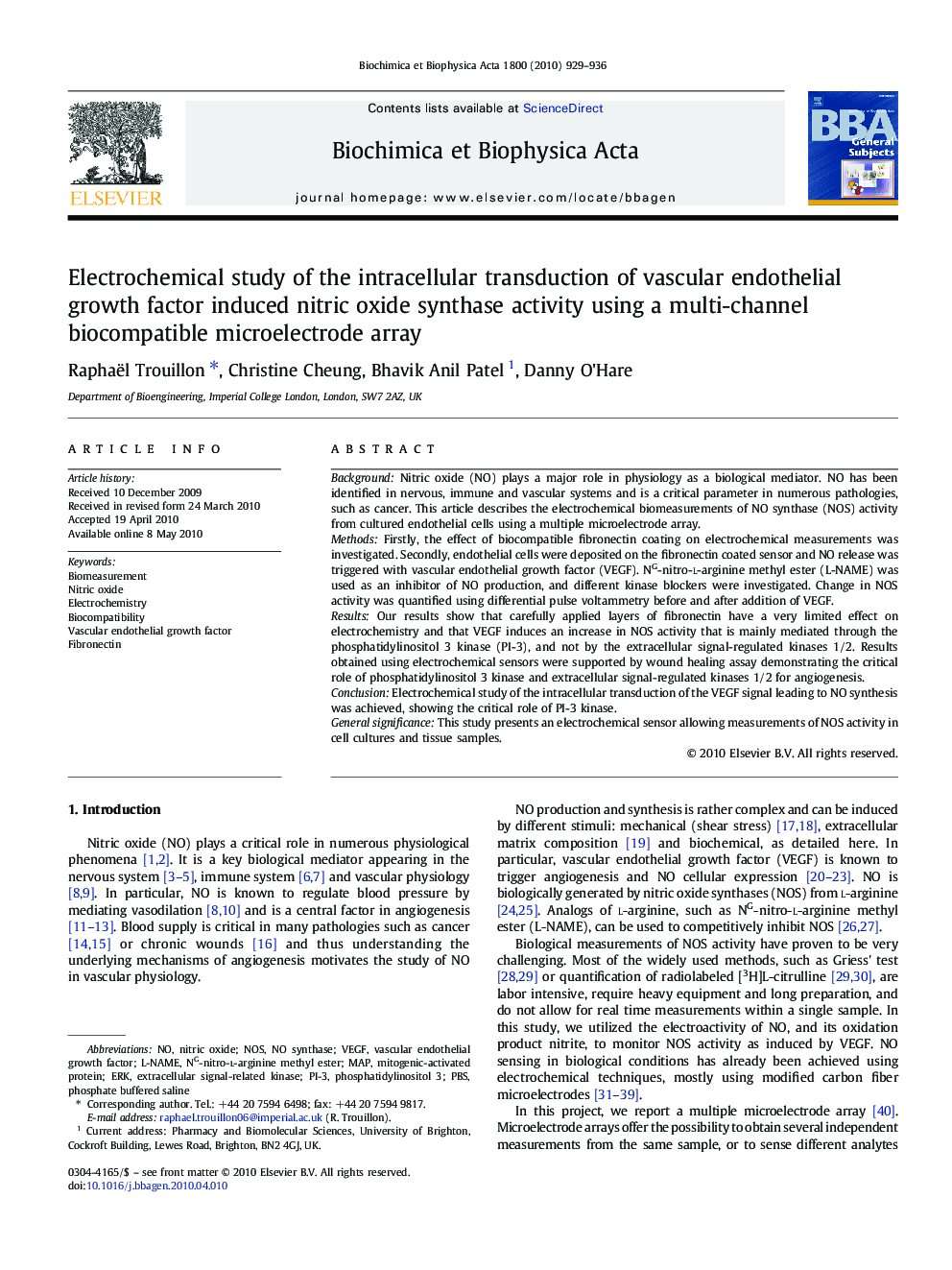| Article ID | Journal | Published Year | Pages | File Type |
|---|---|---|---|---|
| 1947933 | Biochimica et Biophysica Acta (BBA) - General Subjects | 2010 | 8 Pages |
BackgroundNitric oxide (NO) plays a major role in physiology as a biological mediator. NO has been identified in nervous, immune and vascular systems and is a critical parameter in numerous pathologies, such as cancer. This article describes the electrochemical biomeasurements of NO synthase (NOS) activity from cultured endothelial cells using a multiple microelectrode array.MethodsFirstly, the effect of biocompatible fibronectin coating on electrochemical measurements was investigated. Secondly, endothelial cells were deposited on the fibronectin coated sensor and NO release was triggered with vascular endothelial growth factor (VEGF). NG-nitro-l-arginine methyl ester (L-NAME) was used as an inhibitor of NO production, and different kinase blockers were investigated. Change in NOS activity was quantified using differential pulse voltammetry before and after addition of VEGF.ResultsOur results show that carefully applied layers of fibronectin have a very limited effect on electrochemistry and that VEGF induces an increase in NOS activity that is mainly mediated through the phosphatidylinositol 3 kinase (PI-3), and not by the extracellular signal-regulated kinases 1/2. Results obtained using electrochemical sensors were supported by wound healing assay demonstrating the critical role of phosphatidylinositol 3 kinase and extracellular signal-regulated kinases 1/2 for angiogenesis.ConclusionElectrochemical study of the intracellular transduction of the VEGF signal leading to NO synthesis was achieved, showing the critical role of PI-3 kinase.General significanceThis study presents an electrochemical sensor allowing measurements of NOS activity in cell cultures and tissue samples.
